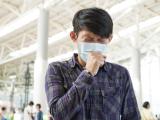Aug 18, 2003 (CIDRAP News) – The vector in the SARS (severe acute respiratory syndrome) outbreak at the Amoy Gardens housing complex in Hong Kong last spring may have been roof rats, hypothesizes Stephen K. C. Ng of Columbia University School of Public Health in an article published in the Aug 16 issue of The Lancet. How the infection spread from the index case to more than 300 residents of the complex very rapidly has remained a mystery. Amoy Gardens has no communal facilities; no common food or water source was identified; and airborne transmission was determined by a World Health Organization investigative team to be unlikely.
The index case was found to be a 33-year-old healthcare worker who stayed overnight with his brother, a resident of Amoy Gardens, on Mar 14 and 19. He became ill on Mar 14; SARS virus was later isolated from his blood, urine, and stool. Between Mar 21 and Apr 1, 267 residents of the complex became ill.
Ng proposes that a rat could have come in contact with infectious material (eg, used tissue, leftover food, excreta) Mar 14 in the apartment stayed at by the index case. That rat, Ng says, would have become contagious about Mar 19. The rat then could have spread the virus to other rats and the rats to humans by means of leaving contaminants (droppings, urine, and saliva—all of which contain large amounts of virus and are highly contagious) in other apartments. The rats also could have spread the virus by coming into contact with clothing hanging on clotheslines outside bathroom windows of the complex that have become "bridges" for the rats as they forage for food.
Three factors in the outbreak—dose, timing, and spatial distribution—have not been adequately explained by other theories on the outbreak but may fit with Ng's rat-vector explanation. As for dose, Ng explains that a sole source of contamination is unlikely, because to infect more than 200 people, "the index patient would have needed to excrete a tremendous amount of virus into the environment." Regarding timing of illness spread, Ng says delivery of the virus to more than 200 people within 1 or 2 days would have been required because of the "finite window of infectiousness" of the index patient, again arguing against a sole source. Finally, SARS cases occurred on upper rather than lower levels of the complex with particular concentration on certain floors; roof rats are known to look for food in elevated areas above ground and to behave habitually, using the same routes over and over and visiting and revisiting the same areas.
Among his theory's weaknesses, says Ng, is the fact that no rodent model has been established for SARS. "The rat vector hypothesis is a strong possibility that needs to be further explored," he concludes. Among his suggestions are epidemiological case-control studies to look for behavioral risk factors and mechanisms for rat-to-human spread, detailed comparisons of SARS cases in Amoy Gardens with SARS cases elsewhere, and viral studies of isolates from Amoy patients to see whether mutation has occurred.
Ng SKC. Possible role of an animal vector in the SARS outbreak at Amoy Gardens. Lancet 2003 Aug 16; 362(9383):570-2 [Abstract]
See also:
Previous CIDRAP News stories about the Amoy Gardens SARS outbreak: March 31, April 2



















